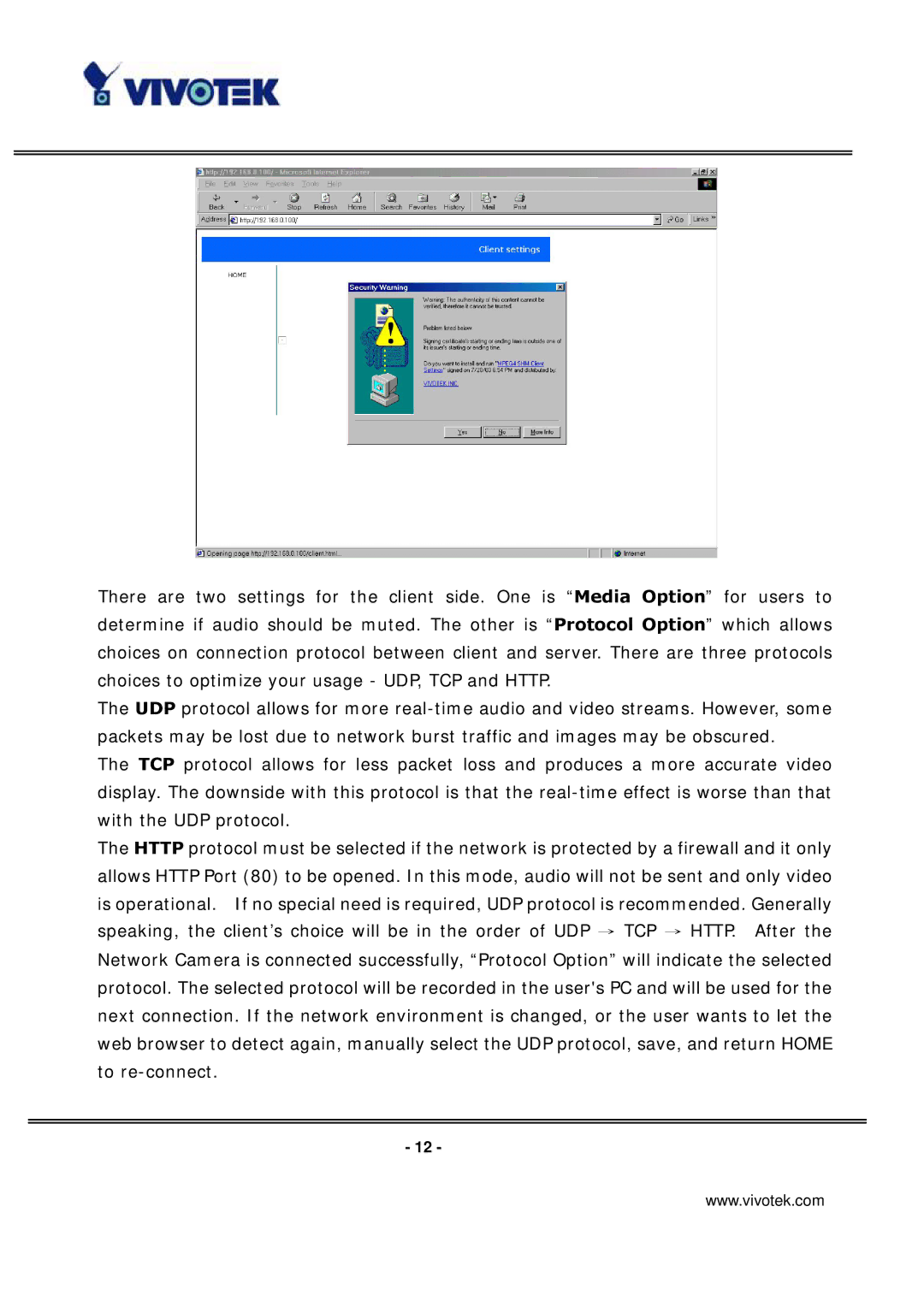
There are two settings for the client side. One is “Media Option” for users to determine if audio should be muted. The other is “Protocol Option” which allows choices on connection protocol between client and server. There are three protocols choices to optimize your usage - UDP, TCP and HTTP.
The UDP protocol allows for more
The TCP protocol allows for less packet loss and produces a more accurate video display. The downside with this protocol is that the
The HTTP protocol must be selected if the network is protected by a firewall and it only allows HTTP Port (80) to be opened. In this mode, audio will not be sent and only video is operational. If no special need is required, UDP protocol is recommended. Generally speaking, the client’s choice will be in the order of UDP → TCP → HTTP. After the Network Camera is connected successfully, “Protocol Option” will indicate the selected protocol. The selected protocol will be recorded in the user's PC and will be used for the next connection. If the network environment is changed, or the user wants to let the web browser to detect again, manually select the UDP protocol, save, and return HOME to
- 12 -
www.vivotek.com
